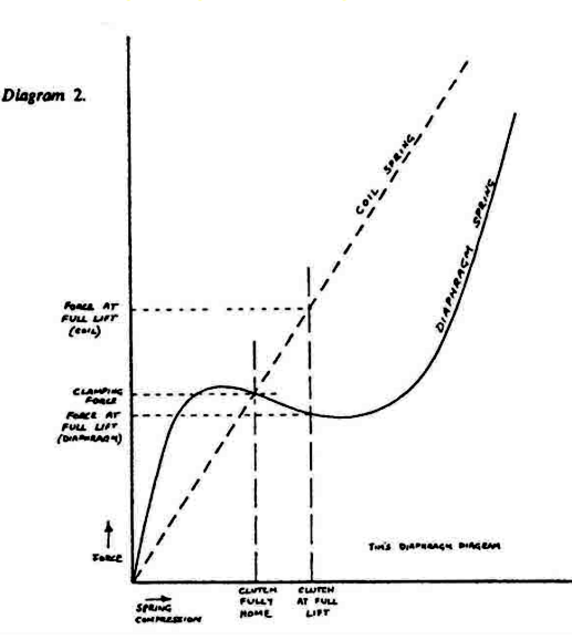- Joined
- Nov 20, 2004
- Messages
- 21,116
OK, missed that. So only 3mm more added. That is about what others seem to be doing also.
A standard 2mm plain plate would normally be replaced with a 3mm or 4mm plate so an extra 1mm or 2mm.
OK, missed that. So only 3mm more added. That is about what others seem to be doing also.
L.A.B. have you adjusted your stack height on your MK3? If so, what size plate did you use?
The diaphragm actually works the opposite way. Increasing the stack height reduces clamping pressure and vice versa and why the action now feels lighter.
It's possible the clutch will be ok with the 3mm increase in stack height if it was as low* as you measured but only a road test will answer
that.
*The accuracy of the measurement depends on how precisely the spring is adjusted to 'flat' using the spring compressor because any (concave or convex) 'dish' remaining in the spring between the pressure plate ring and the periphery of the spring will result in an inaccurate stack height measurement.
Thank you.Yes, one 3mm RGM plate.
I'd thought that the maximum pressure was when the plate is flat, so when the stack height is too low, the clutch lever has to move from, say, concave with 80% pressure, through 100%, to the 80% convex, so the whole lever action was going through the toughest part of the pressure range.

Many of us have belt drives with different clutch baskets or worn or different brands of clutch plates etc etc. What we need is an ideal measurement of the diaphram at rest - is it flat or concave and how much? And we need the ideal measurement of the diaphram with the clutch lever pulled - is it flat or convex and how much?
I'm going to make a statement that I hope is true - you want your Commando diaphram to be convex with the lever pulled and flat with the lever released. Somebody please verify or correct this. I'm going to makes some experiments later today.
With my original setup the diapham was concave with the lever out and nearly flat with the lever pulled.
I use the Atlas clutch lever pivot to reduce lever tension.The stack height must have been fairly low to begin with if the spring didn't go convex with the lever pulled in, that's assuming the clutch actuator is the standard Commando one and not the lower lift Dominator/Atlas type or shorter clutch lever pivot radius, etc.
It's the opposite, as the spring approaches 'flat' the spring pressure is reduced resulting in less clamping force and less effort is then required to lift the spring.
Increasing the stack height moves the range between the "Clutch Fully Home" - "Clutch at Full Lift" lines further away from the spring's point of maximum clamping force (the peak to the left of the clutch range) on the diagram, below:
Is the first peak of pressure when the plate is flat, which was my understanding?
Or is the point where the diaphragm is flat at the bottom of the dip?
If true then there'd be no need for "easy pull" clutch kits and clutch pull can often be improved by 'tuning' (usually increasing) the stack height.
Unworn clutches can also benefit from the increased stack height as it is often 'low' even with new plates.
My Mk3's clutch pull was certainly lighter after fitting RGM's 3mm plain plate and that was shortly after fitting new (Surflex) friction plates.
I have a 3mm plate as well. Just exchange it for the 4mm or doing something more clever? Suggestions?
